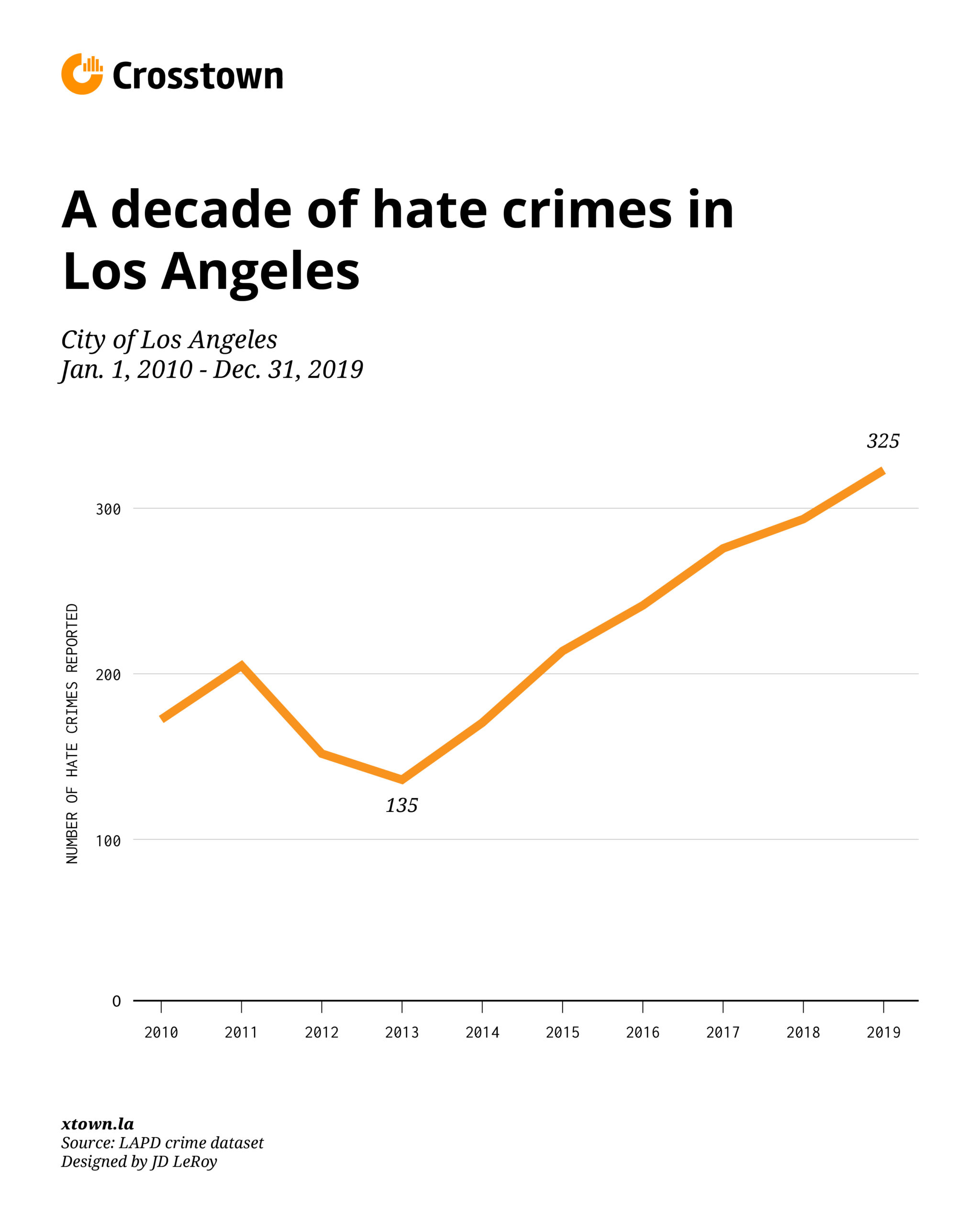The decade in hate crimes

There were 325 hate crimes reported to the Los Angeles Police Department in 2019, the highest number in at least a decade, and a 10% increase from the previous year.
It was the sixth consecutive year in which hate crimes increased.

Nearly half of last year’s hate crimes were violent, consistent with past years.
Hate crimes often impact some of the most vulnerable communities in the city. In a single incident on June 14, four Hispanic children were victims of aggravated assault in Lincoln Heights. Crosstown recorded every reported hate crime in the City of Los Angeles in 2019.

There were 96 victims of Hispanic descent, more than any other group. They were 76 black victims, according to LAPD data.
Police data also notes the motivation for each crime. There were 55 hate crimes that listed “Bias: Anti-Black or African American” as the motivation, and 38 that reported “Bias: Anti-Hispanic or Latino.” “Bias: Anti-White” appeared in 10 reports.
There were 46 reported hate crimes with an “Anti-Jewish” bias, or 14.2% of total hate crimes for 2019. Out of 20 hate crimes where “Bias: Anti-Transgender” was the motivator, 16 of them targeted transgender women of color – 12 of Hispanic descent and four black.
The LAPD defines hate crime as “any criminal act or attempted criminal act directed against a person or persons based on the victim’s actual or perceived race, nationality, religion, sexual orientation, disability or gender.”
Of the 325 hate crimes reported last year, 75 were battery or simple assault and 55 were aggravated assault. One hate crime was listed as a criminal homicide that took place on June 6 at a Baldwin Hills/Crenshaw apartment. The suspect stabbed and killed the 65-year-old black female victim with a kitchen knife. The suspect and victim were married and lived together in the same apartment.
How we did it: We examined publicly available LAPD data on reported hate crimes in the City of Los Angeles. For neighborhood boundaries, we rely on the borders defined by the Los Angeles Times. Learn more about our data here.
LAPD data only reflects crimes that are reported to the department, not how many crimes actually occurred. In making our calculations, we rely on the data the LAPD makes publicly available.
The LAPD periodically updates past crime reports with new information, leading the department to recategorize past reports. We have been tracking hate crimes since Jan. 1, 2019, numbering them as the reported crime data is made public. Additionally, revised reports do not always automatically become part of the public database. But, we will keep monitoring hate crimes in the City of Los Angeles.
Want to know how your neighborhood fares? Or simply just interested in our data? Email us at askus@xtown.la.






